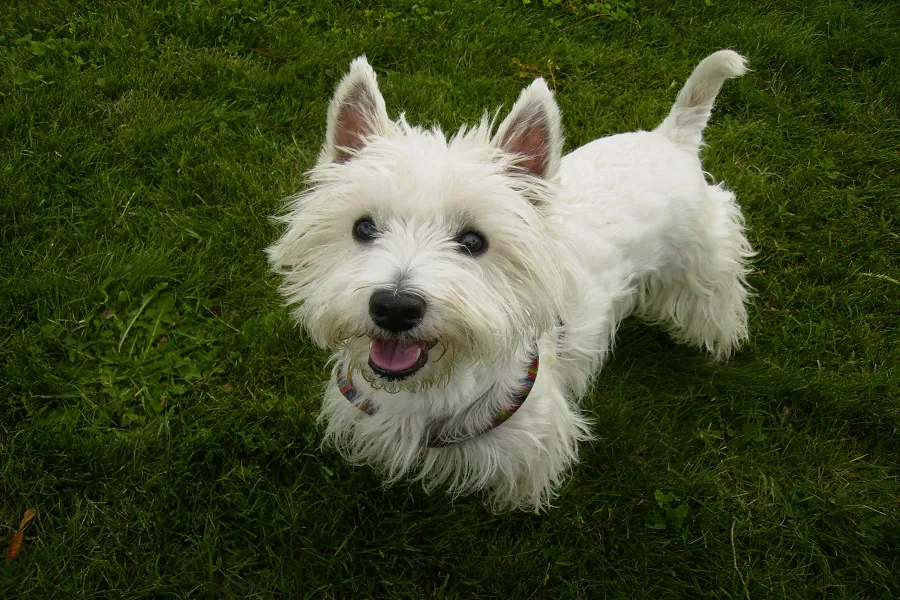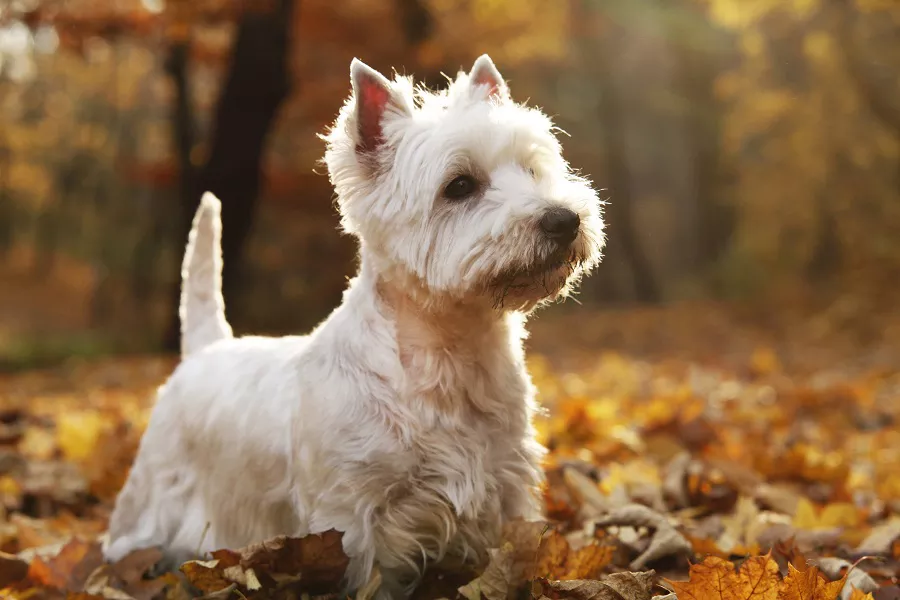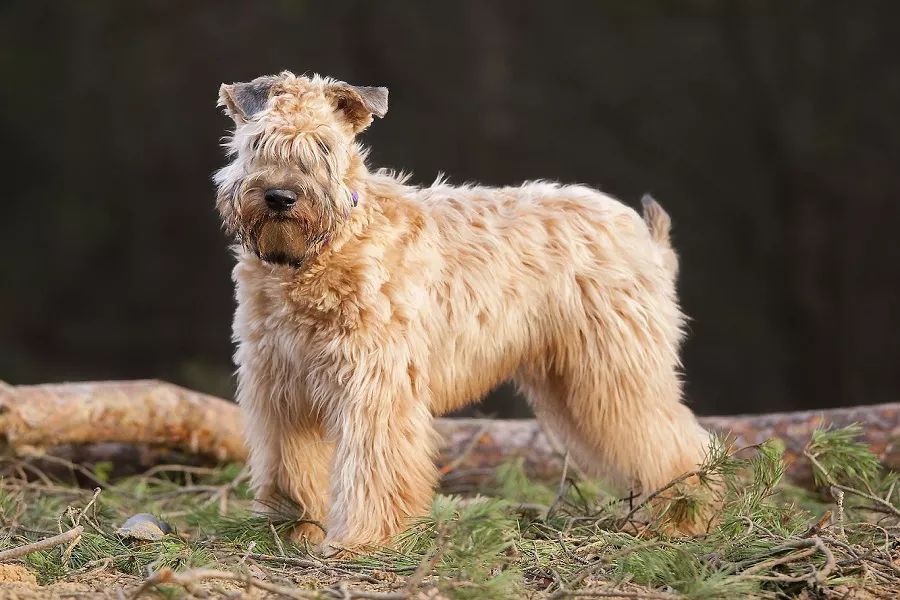What is a welsh terrier?
The Welsh Terrier is an English dog breed that originated in the 19th century. The ancestor is the British Welsh old-fashioned black and brown terrier. It was first recognised by the Kennel Club of England in 1886. It was introduced to the United States two years later. The Welsh Terrier is a sturdy, compact, sturdy small dog with ragged bristles. Legs, lower body, and head are tan; black (sometimes gray) “jacket” on back, etc. The tail is docked, making it a “square” dog with body length roughly equal to the height at the withers. Its gait is that of a typical long-legged terrier’s trot. Easy, stretches and drives well. Welsh Terriers are very friendly and get along well with other people and dogs when outside. Show enthusiasm and courage. The “Welsh terrier expression” is formed by the color, position and fit of the eyes of the terrier.
What does a Welsh Terrier look like?
The entire head is rectangular. The eyes are small, dark brown, and almond-shaped, well positioned on the skull. The positions are compared with each other. The size, shape, colour and placement of the eyes make it appear firm, confident and alert, typical of the Welsh Terrier expression. The ears are V-shaped and small, but not too thin. The crease is just flush with the top of the head. When the dog is quiet, the ears drop forward, against the cheek, with the tips down, or slightly out of the corner of the eye. When the dog is focused, the ears are slightly up and forward. The face is strong and powerful, with strong jaws. Only slightly thinner than the back of the head. The stop is slight. The back of the head is roughly the same length as the face. The head is flat (not arched) between the ears. There are no wrinkles between the ears. Cheeks are flat and clean (no protrusions). The muzzle is half the length of the entire head. The entire face needs to be trimmed into a rectangle, and no exaggeration. The muzzle is strong and square, and must never be rude. The lips are black and tight. A scissors bite is ideal, but a pincer bite is acceptable. In any occlusion, missing teeth are not allowed. The teeth are large, strong, and powerful, with jaws like a vise.
The neck is of medium length and thickness, slightly arched and softly joined to the shoulders. The throat is clean and free of excess fat. Topline level. The body appears to be well-boned, with well-supported ribs. The chest is of the right depth and width. The waist is strong and short. The tail is docked, and the remaining length is approximately the same as the height of the back of the head (an imaginary straight line), forming a complete square appearance. The base of the tail is located high on the back. The tail is raised vertically.
The front is straight, the shoulders long, sloping and well integrated into the back. Legs are straight and muscular, and ankles are vertical and powerful. The feet are small, round, and cat-like. The pads are thick and black. Nails are strong and black. The hindquarters are strong and muscular, with a well-developed second thigh and moderate flexion of the hind knees. The hocks are moderately vertical, parallel to each other and a short distance from the junction to the ground. The gait is straight, free and easy, the forequarters stretched freely, the hindquarters are powerfully driven, and the feet naturally move toward the centerline as the pace increases.
The coat is hard bristles, dense. The undercoat is short and soft. The muzzle, legs and feet are densely bristled. The upper coat is black, starting from the neck and down to the tail and upper thighs. Legs, feet and head are a single brown. Brown is the kind with a hint of deep red, shades with a slightly lighter color are acceptable. In addition, gray is also acceptable.
welsh terrier lifestyle
The Welsh Terrier is a playful, alert, alert, and courageous dog who also displays friendliness and self-control. Smart and likes to be please. In the game, excessive aggression and timidity are flaws.
The Welsh Terrier is lively and cheerful by nature, simple, cautious and curious. It’s emotional, it’s tolerant of children, and it can endure a little rough play. But don’t be fooled by its appearance, it’s actually muscular – strong, compact, and likes to swim and dig holes. The owner should pay attention when it walks by the water, and also pay attention when raising it in the home with garden decoration.
Welsh Terriers are medium in size, do not shed their hair, and have no genetic diseases, making them ideal for feeding urban families, and even large families can get along well. But it is not suitable for feeding with other dog breeds, because the Welsh terrier is naughty and active, very obedient to the owner’s instructions, but likes to provoke each other when alone with other dogs, which leads to danger. Professional plucking is required twice a year, and if shaving is used, its coat will become lighter in color. And usually only need to comb the coat and take a bath to meet its daily care needs.
Welsh Terrier Breeding
Although the Welsh raccoon has gradually become able to eat everything in the long-term life with people, some foods are not suitable for dogs, such as shrimp, crab, cuttlefish, octopus, jellyfish, etc., which can easily cause indigestion.
Speaking of bones, when it comes to dogs, they always say that they like to chew on bones, but if you need to feed them bones for calcium supplementation, cow bones and pork bones are better. And chicken bones are not suitable. The chicken bones are relatively brittle, and they are easy to become small pieces after being bitten, and the tips of the small pieces are particularly sharp, which can easily scratch the stomach and intestines of dogs after swallowing. Fish bones are also as dangerous as chicken bones and should not be eaten by dogs. But canned fish is not a problem because the spines are already crispy.
Reminder: For more knowledge about dog feeding, dog training, dog grooming, dog breeding, please pay attention to: mtedr.com, providing you with different kinds of dogs.

























